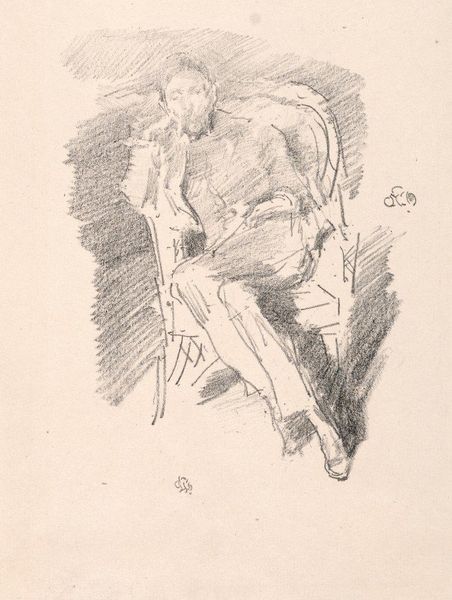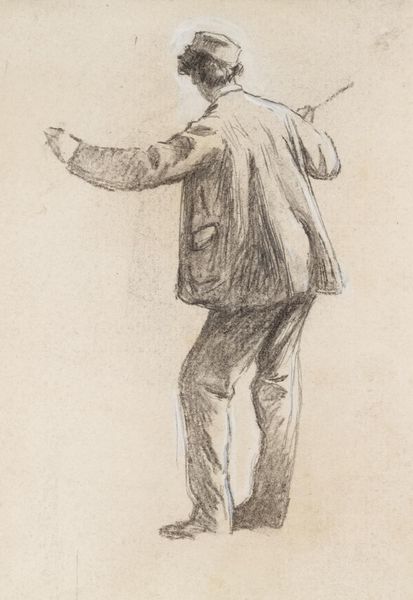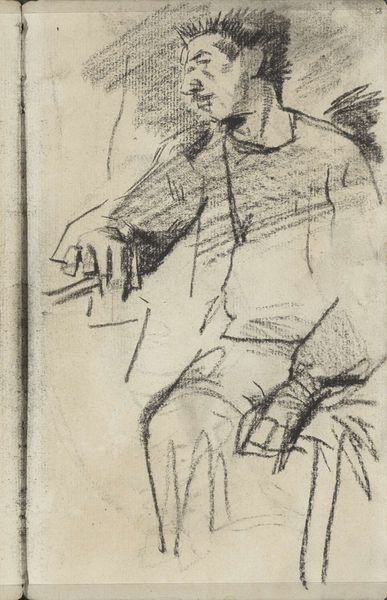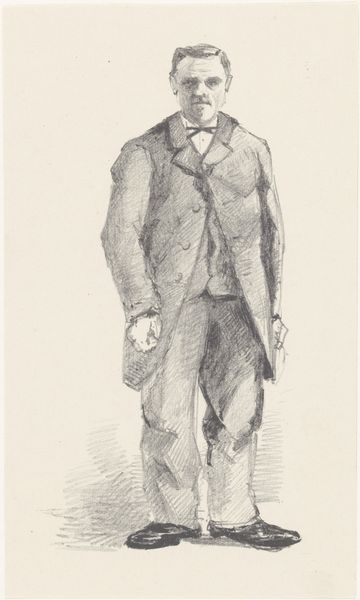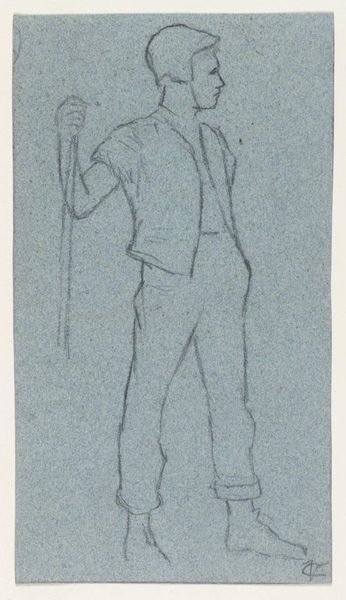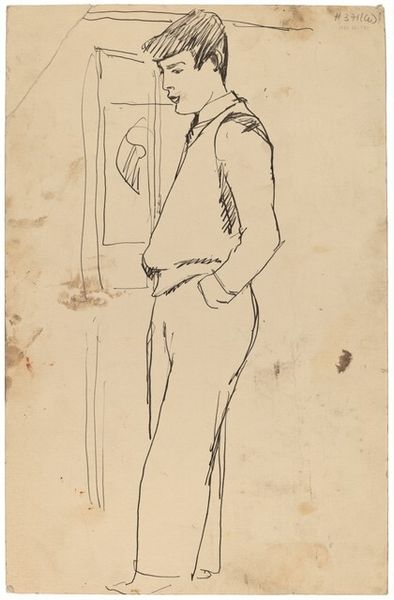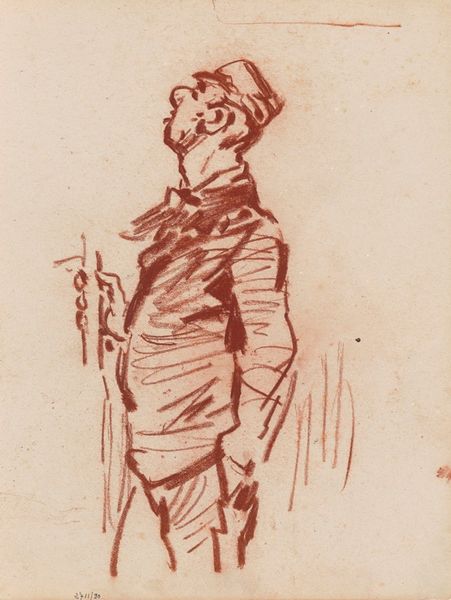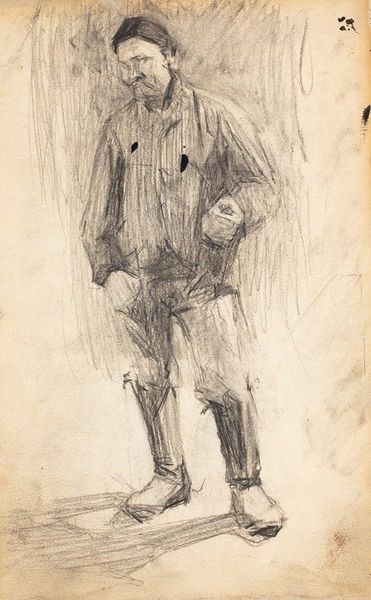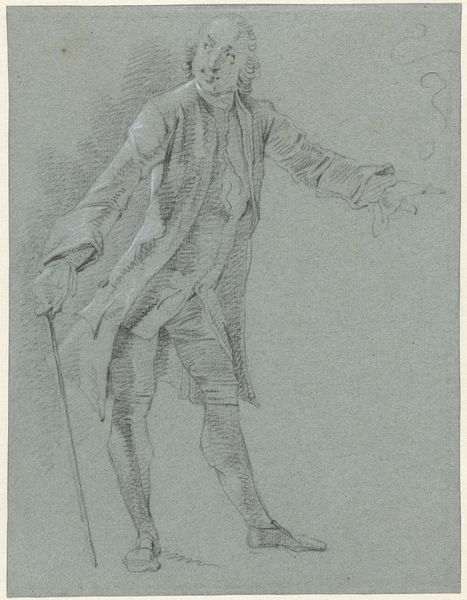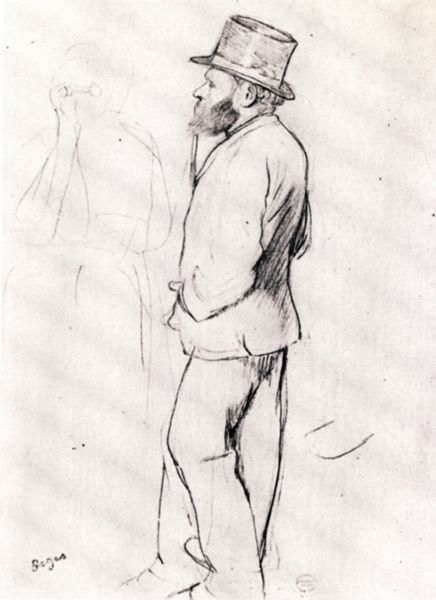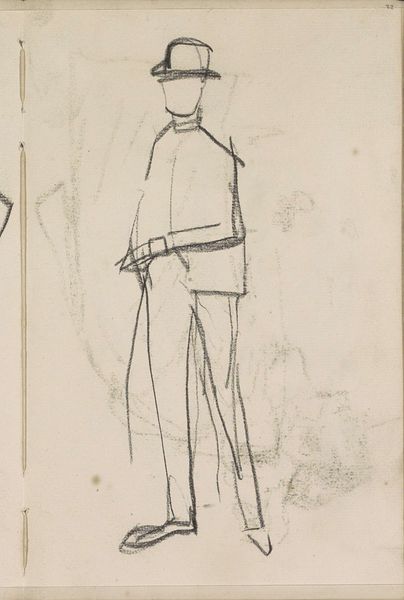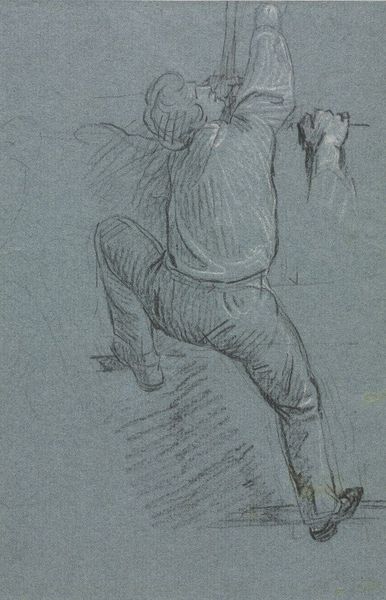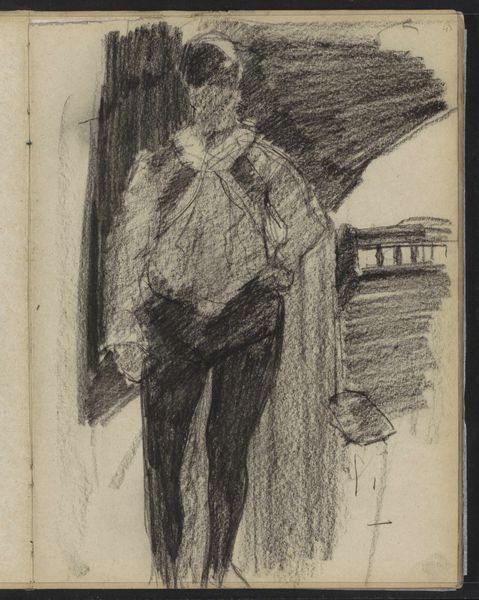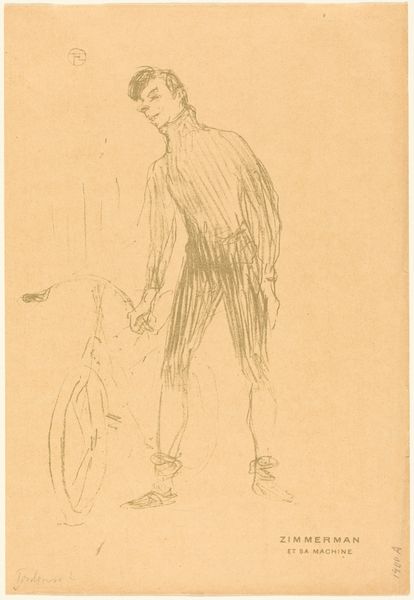
drawing, pencil, graphite
#
portrait
#
drawing
#
pen sketch
#
pencil sketch
#
pencil
#
graphite
#
academic-art
Copyright: Public Domain: Artvee
Editor: This is James McNeill Whistler's "Portrait of Thomas Way no. 2" from 1896, made with graphite on paper. It’s quite a simple sketch, but I'm really drawn to how he captures the figure's posture and weight with such minimal lines. How do you interpret this work, looking at its formal elements? Curator: Consider the distribution of light and shadow across the composition. Whistler masterfully employs chiaroscuro to define Way's form, particularly in the contrasts of dark hatching behind him and lighter areas defining the planes of his face. Observe how this play of light not only shapes the figure but also integrates him into the pictorial space. Editor: Yes, the shading is quite effective! I also notice that the details are mostly on the upper part of the body, while the legs and feet have very few strokes. Is there any intent there? Curator: Precisely. This selective detailing serves to emphasize the sitter's presence and gaze. The structural integrity of the drawing lies in the proportional relationships and balance of tone across the picture plane. It adheres to formal conventions by creating a focal point in the head and using gradations in darkness to give spatial recession. Would you agree? Editor: Absolutely. Concentrating the details towards the head creates an implicit hierarchy and guides the viewer’s eyes to the sitter’s expression. Also, notice how the position of the sitter within the composition and how the use of lines behind him allows our minds to perceive him closer to us, therefore understanding his emotions through this physical closeness. Curator: A pertinent observation. It demonstrates how, by orchestrating visual elements—line, tone, space—Whistler created an impactful image that extends beyond a mere likeness. Editor: Indeed, by exploring beyond mere resemblance, we encounter a captivating construction. This discussion clarified how Whistler's expert manipulation of structure informs our perception. Curator: I concur. Through analysing composition, technique, and form, one may uncover nuanced layers of meaning within the artist's intention.
Comments
No comments
Be the first to comment and join the conversation on the ultimate creative platform.
